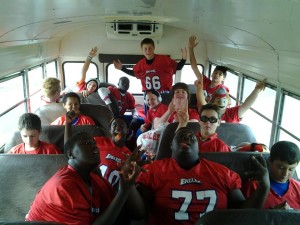How to Start a Youth Sports Program
Although organizing a youth sports program requires time and effort, the feeling of putting together an organized, functional sports program for the community is gratifying. Some communities have a void when it comes to a well-working sports league, especially among youth players. It may be up to you to fill that void.
Successfully starting a youth sports program involves considerable foresight, though, and there are several tasks and fees are worth considering before you start the program. Here are some of them:
1. Find a Facility
A youth sports program needs somewhere to play, reliably. Waiting until the last minute to book games can result in failing to find a place to play, which will turn off members in the league fairly quickly. Instead, make a list of options in your area, including public and private schools, parks, sports complexes, churches and community centers, and make sure they can accommodate your program consistently.
The price of each venue will vary, too, so consider your budget when speaking with whoever represents the venue. Additionally, make sure the venues are within 20 to 30 minutes of most players. Anything longer than that, and you may need to rent or buy a bus for the entire team, which can be done rather easily.
2. Hire Umpires and Referees
Referees are an influential factor in distinguishing a legitimate sports league from a questionable one. They provide an independent, unbiased way for the players to play the game, without worrying about whether rules are enforced. A quality referee arrives 10-15 minutes before game time, with full knowledge of rules and regulations. Referees are paid between $10 to $20 an hour.
Make sure to book referees well in advance, along with the venue. A lack of venue or referee can quickly turn a scheduled game into a canceled one and frustrate every player involved.
3. Provide Equipment References
A commendable facility will likely already have basic sports-specific equipment, such as volleyball nets and basketball hoops. However, participants are usually expected to purchase their own wearable equipment. Additionally, you are expected to bring your own smaller, specific items, like bats, cones or balls.
Uniform guidelines can be fairly standard, and something simple, like cotton t-shirts, tends to be the best option. You could also shop around for potential sponsors, who may purchase the uniforms themselves if their business logo is featured on it.
4. Make an Online Hub
Whether it’s a website or Facebook group, keep members updated on the schedule, rules, equipment necessities and anything else. Update several times per week to keep members involved.
You can also use a website and social media to update standings to reflect game outcomes, along with team photos to put faces to a team name. The website should also have an easily accessible section for sports rules and recommended equipment, along with an FAQ or a Q&A section and your phone number and email should someone want to contact you.
5. Promote Sportsmanship
When establishing rules for the program, it’s a good idea to make certain sportsmanship actions mandatory, such as shaking hands before and after each match, showing general respect to all participants, not cheating or faking an injury and not arguing with the referee.
Good sportsmanship is an important component of any sports organization.
6. Get Payments Upfront
Additionally, so it doesn’t become an issue in the future, collect any player fees up front. Especially with digital options like PayPal, Venmo or Square Cash making payment easier than ever, there’s no excuse for payments not be up front. Upfront payment also makes it less likely that certain participants won’t just drop out. Also, make sure to regard local laws for forming a not-for-profit organization, the most common type of entity for youth sports organizations.
As far as refunds, clarify the allowable circumstances before anyone signs up. Injury and unexpected life events can happen, so make it clear which cases allow a refund.
You can develop and become the leader of a fantastic youth sports program with the proper knowledge and foresight, particularly regarding the aspects above. From finding the right facility to maintaining an active online presence for the league, these tips can help start a league and sustain interest once the league is running.


















